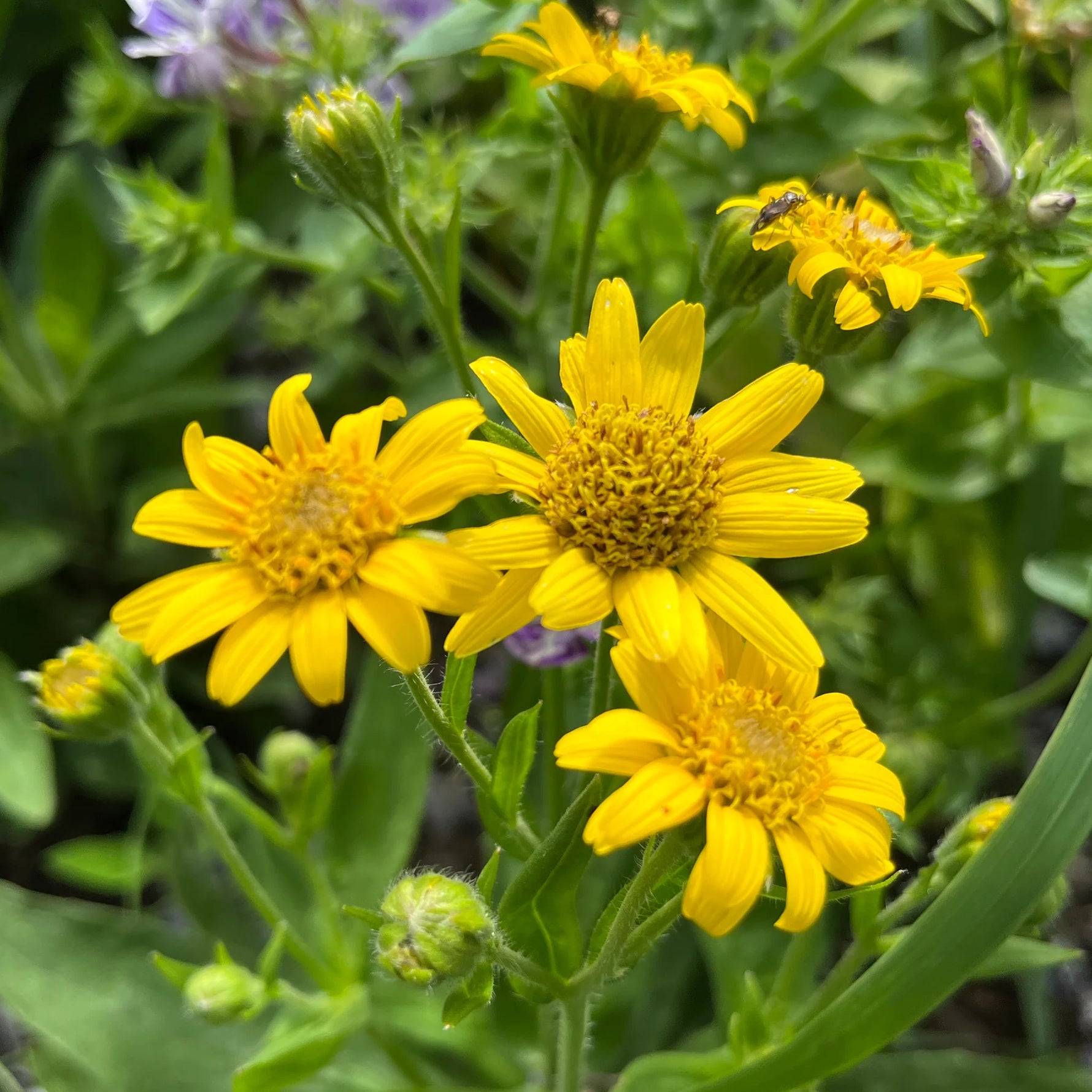
Dharaseeds
Arnica Meadow Seeds
Estimated delivery between April 14 and April 17.
Arnica Meadow Seeds
Arnica Meadow Seeds offer a natural way to cultivate a vibrant, healing landscape. Known for its bright yellow flowers and medicinal properties, Arnica montana is a valuable addition to any herb garden or wildflower meadow. Native to mountainous regions, Arnica thrives in well-drained soil and bright, sunny locations, where it can grow and bloom, creating a stunning visual display while offering a variety of health benefits.
Key Features of Arnica Meadow Seeds
Bright Yellow Flowers Arnica plants produce beautiful, daisy-like yellow flowers that are not only visually striking but also have a strong, fresh fragrance. These blooms stand out against their green foliage, making them a cheerful addition to any garden.
Medicinal Properties Arnica is widely known for its medicinal properties, especially in the form of creams and ointments used to soothe bruises, sprains, and muscle soreness. Growing Arnica from seed allows you to have a personal, homegrown source of this healing herb.
Hardy, Perennial Growth Arnica is a perennial, meaning it will return year after year, adding longevity to your garden. The hardy plant thrives in rugged conditions, making it perfect for meadows, wildflower gardens, or even xeriscaping.
Attracts Pollinators Arnica flowers attract bees, butterflies, and other pollinators, contributing to a healthy, biodiverse garden. This makes them not only a beautiful addition but also beneficial to the overall ecosystem.
Benefits of Arnica Meadow Seeds
Natural Medicinal Uses The most notable benefit of Arnica plants is their use in natural remedies. Arnica has anti-inflammatory and analgesic properties, and its flowers are often used to make salves, oils, and creams that help with pain relief, reducing swelling, and promoting healing of bruises and sprains.
Low Maintenance Arnica plants are relatively low maintenance once established. They tolerate poor soils and require minimal watering, making them an excellent choice for gardeners who want a hardy, easy-to-grow plant.
Ideal for Wildflower Meadows Arnica is well-suited for wildflower meadows or naturalistic garden designs. It thrives in full sun and well-drained soil, making it an ideal choice for naturalizing areas that may otherwise be difficult to cultivate.
Promotes Biodiversity By planting Arnica, you are enhancing the biodiversity of your garden. The plants attract various pollinators and beneficial insects, creating a vibrant, eco-friendly environment.
How to Plant and Care for Arnica Meadow Seeds
Starting Seeds Sow Arnica seeds directly outdoors after the last frost, or start them indoors 6-8 weeks before the last frost. Lightly press the seeds into the soil, as they require light to germinate. Ensure the soil is well-draining and moist but not overly wet.
Transplanting Seedlings If you started the seeds indoors, transplant the seedlings outside once they are large enough to handle. Ensure they are placed in a sunny location with well-drained soil. Space the plants about 12-18 inches apart to allow for their natural spreading growth.
Watering While Arnica is drought-tolerant, it will benefit from regular watering during dry spells. Water at the base of the plant to avoid wetting the leaves, which can cause rot. Let the soil dry out between waterings to prevent waterlogging.
Lighting Arnica plants thrive in full sunlight. Plant them in an area where they will receive at least 6 hours of direct sunlight per day. They can tolerate partial shade but will produce fewer flowers.
Soil Requirements Arnica prefers well-draining, slightly acidic to neutral soil. It is ideal for sandy or loamy soils and can tolerate poor, rocky ground, making it perfect for wildflower meadows or xeriscaping projects.
Fertilizing Arnica plants do not require heavy fertilization. A balanced, slow-release fertilizer applied once in the spring is usually sufficient to support healthy growth. Avoid over-fertilizing, as this can lead to lush foliage but fewer flowers.
Harvesting and Using Arnica
Harvesting Flowers Arnica flowers are best harvested when they are fully open, typically in late spring to early summer. Use a sharp knife or scissors to cut the flowers, leaving the stem intact for continued growth.
Medicinal Uses The harvested flowers can be dried and used to make a variety of medicinal preparations. Arnica is often infused in oil or alcohol to create tinctures and topical treatments. Always consult with a healthcare provider before using Arnica-based products, as it can cause irritation in some people when applied directly to the skin.
Seed Saving To save seeds, allow the flowers to fully mature and produce seed heads. Once the seed heads have dried, gently collect the seeds and store them in a cool, dry place until you're ready to plant them again.
Perfect For:
- Wildflower Meadows: Ideal for creating a natural, healing landscape with a variety of textures and colors.
- Herb Gardens: A great addition to herb gardens, especially for those interested in natural remedies.
- Pollinator Gardens: Encourages beneficial pollinators like bees and butterflies.
- Health Enthusiasts: Perfect for gardeners interested in growing their own medicinal herbs.
Why Choose Arnica Meadow Seeds?
Arnica Meadow Seeds offer a fantastic way to cultivate both beauty and health in your garden. With its bright flowers, medicinal properties, and ease of care, Arnica is an excellent choice for any garden—whether you’re a seasoned gardener or a beginner. Grow your own Arnica plants and have a sustainable, homegrown source of this wonderful herb right at your fingertips, year after year.








